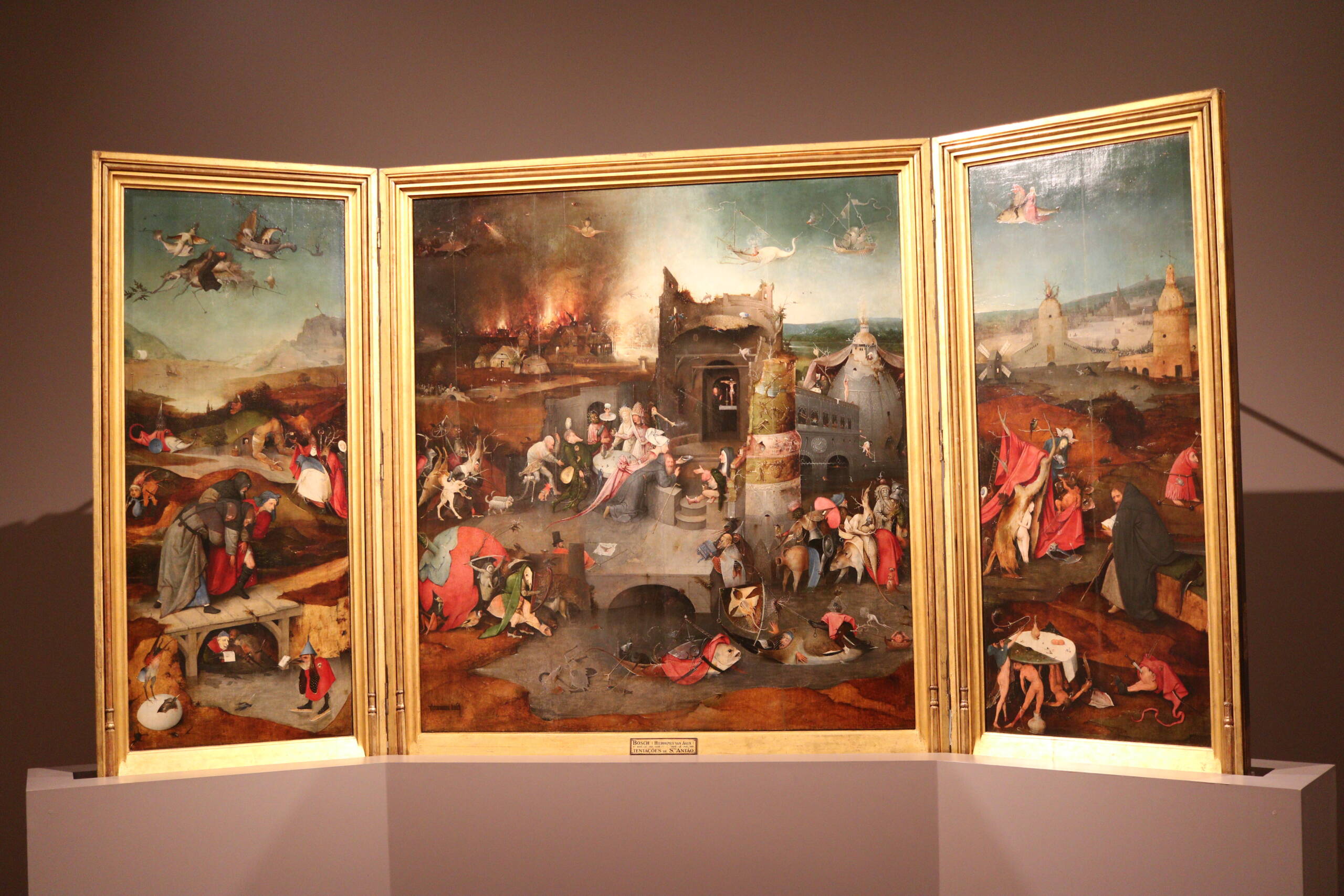Tucked inside Lisbon’s Museu Nacional de Arte Antiga, just off the Rua das Janelas Verdes, stands one of those paintings that leaves you both uneasy and completely mesmerized. Hieronymus Bosch—or more precisely, his workshop—crafted The Temptation of St. Anthony as a triptych, and seeing it in person feels like being pulled into a fever dream. It’s a world where saints are tormented, landscapes burn in the distance, and fantastical creatures crawl, fly, and lurch across the panels with grotesque delight.

The central panel is a chaos of fire, crumbling towers, and surreal temptations, with St. Anthony himself sitting in the midst of it all, seemingly calm while madness whirls around him. The left wing shows his torments—demons swooping in, bizarre hybrid beasts clawing at the edges of reality. On the right, a monk-like figure kneels, seemingly in contemplation, as processions of bizarre creatures march on. It’s Bosch at his best: a moral tale dressed in surrealist terror centuries before surrealism existed.
Walking up to it in the museum, the gold frames glow under soft light, but it’s the detail that traps you. You lean closer and discover strange little worlds tucked into corners—tiny devils cooking men in pots, human-beast hybrids riding fish, surreal towers built from impossible shapes. You catch yourself smiling at the sheer oddity of it all, then a moment later shivering at the darkness beneath.
Lisbon is full of treasures—tiles, monasteries, miradouros with sweeping views—but the MNAA has this quiet trump card: one of Bosch’s great nightmares on wood. It’s worth the detour, and honestly, worth sitting with for far longer than most people do. Give it time, and the painting starts to whisper things about temptation, chaos, and endurance that feel uncomfortably modern.
Leave a Reply